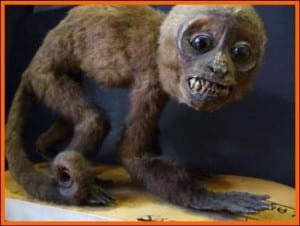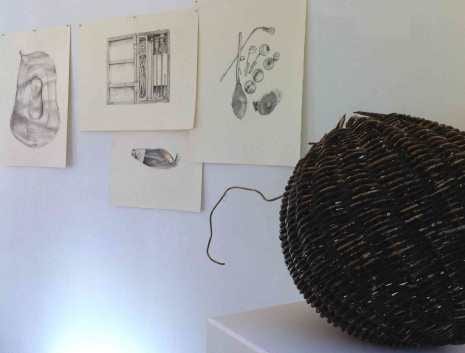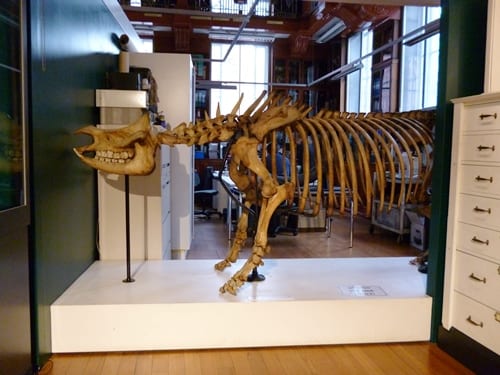Specimen of the Week: Week 177
By Will J Richard, on 2 March 2015
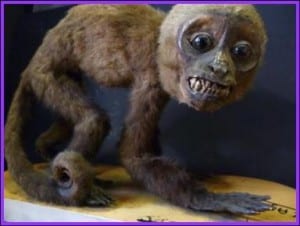 Hello Grant-fans. Will Richard here. Bringing you this week’s specimen. And just like last time (and the time before etc.) the dilemma is… what to choose? So far I’ve reported on three mammals and a bird. All full of backbone.
Hello Grant-fans. Will Richard here. Bringing you this week’s specimen. And just like last time (and the time before etc.) the dilemma is… what to choose? So far I’ve reported on three mammals and a bird. All full of backbone.
So, I suppose I’ll have to bite the bullet, but not the bullet ant, and give a nod to the better half (more like nine and a half tenths) of the animal kingdom.
The invertebrates.
This week’s specimen of the week is… Read the rest of this entry »
Underwhelming Fossil Fish of the Month: February 2015
By Mark Carnall, on 27 February 2015
Welcome one, welcome all to February 2015’s Underwhelming Fossil Fish of the Month. For the uninitiated, this blog series is an exploration of world of underwhelming fossil fish. Natural history museums are packed with millions of specimens but most aren’t the celebrated, charismatic, blockbusting Hollywood specimens. Most are uncelebratable data points. Broken, ugly and altogether uninteresting. This series, the whole of which you can browse through here (READER DISCRETION ADVISED: reading too many in one sitting may put you in a permanent state of torpor), focuses on the Grant Museum’s fossil fish collection. Month by month we swivel the spotlight onto one of our fossil fish specimens and contemplate the borderline mediocre. Why do we have these specimens? Can we learn something about ourselves by trying to stay awake reading about them? No. No of course we can’t.
Matchstick props to keep your eyes open recommended for this one, set phasers to underwhelm. For series fans you may be slightly excited to learn it’s a return of the SPOT THE FOSSIL FISH format that nobody has been clamouring for!
London’s Biodiversity Health Check
By Dean W Veall, on 26 February 2015
Dean Veall here, we are getting ready for tonight’s Focus on the Positive event where we will be giving away £2,000 to a researcher here at UCL. They will pitch to the audience their project who will then vote to decide which project, related to their research, becomes a reality. Alison Fairbrass was a runner-up at a previous event and has written about how she spent her £1,000 prize giving London Biodiversity a health check.
Specimen of the Week: Week 176
By Mark Carnall, on 23 February 2015
A question we get from our visitors a lot at the Grant Museum is “Is it a dinosaur?” either preceded or followed by the question “Is it real?”. There’s something about a natural history museum that despite displaying skeletons of horses, rhinos, frogs, fish, bats, cats, rats, snakes and crocodiles, to many of our younger visitors (but not exclusively) any skeleton in a museum, particularly a big one, has to be a dinosaur (of the non bird variety of course but that’s a blog post for another time). That’s how dinosaurs come, as large skeletons. So unfortunately for us we have to deflate the expectations of our visitors sometimes by informing them that no, sorry, it isn’t a dinosaur it’s ‘just’ an elephant or gorilla or tiger. Animals which are endlessly fascinating and amazing in their own right but not at the precise moment of discovering “oh-its-not-a-dinosaur”.
We don’t have a huge amount of dinosaur material at the Grant Museum – just over one hundred specimens including a lot of plaster casts and our ever popular plastic dinosaur collection. Of the actual fossil material we have in the collection, there’s very little material which brings to mind the awe-inspiring, ground shaking, fearsome dinosaurs we’re used to in popular culture. The reality is (dare I say) a bit more underwhelming, our dinosaur fossil collection comprises fragments of ribs, partial vertebrae and according to one of our database entries a ‘sub angular fossil fragment’. However, we do have one complete (non-avian) dinosaur skeleton on display. One that’s easily missed, tucked above our whale display. So ask me again. Is it a dinosaur? Yes it is! Is it real? Errr no, it’s just a cast (topical) BUT IT’S STILL INTERESTING OKAY.
This week’s specimen of the week is…
Specimen of the Week: Week 175
By Tannis Davidson, on 18 February 2015
 Less than two weeks ago, the first batch of newly-conserved skeletons from our Bone Idols project returned to the Grant Museum after their completed restoration work.
Less than two weeks ago, the first batch of newly-conserved skeletons from our Bone Idols project returned to the Grant Museum after their completed restoration work.
Reg the Rhino -the largest skeleton in the Museum – was treated in this group and has now been remounted in fine form back on his plinth.
Homecoming celebrations continued with the unpacking of several smaller primate skeletons such as the juvenile orang-utan, one of the chimpanzees, and this week’s Specimen of the Week… Read the rest of this entry »
Adventures in disposal: Sawdust & Threads
By Subhadra Das, on 17 February 2015
Today sees the opening of Sawdust & Threads: an exhibition, residency and art installation which will be based at UCL’s North Lodge on Gower Street for one week until Monday 23rd February 2015.
Sawdust & Threads is an exhibition that takes objects disposed of from museum collections as its material. After drawing the objects, artist Caroline Wright will carefully deconstruct them, reducing them to their component parts. UCL Museums & Collections is one of three museums – along with Norwich Castle Museum and Art Gallery and the Polar Museum in Cambridge – collaborating with Caroline by contributing objects to this Arts Council Funded project. Her drawings will be on display in the North Lodge, and Caroline will be deconstructing the objects from UCL’s Teaching & Research and Ethnography collections in the North Lodge and at the Institute of Making from today.
From the Archives: A letter from Robert Grant
By Mark Carnall, on 11 February 2015
Off of the back of this blog post about the mysterious missing specimens that were donated to the University I was contacted by UCL’s Records Manager, Colin Penman, about an exciting discovery in UCL’s archives. Colin recalled seeing a letter in the archives from the Museum’s founder and first curator, Robert Grant, so I arranged to go and see it. This was exciting because aside from published lectures and public letters, very few of Grant’s papers and correspondence are known to exist. This is doubly frustrating and surprising because as Sarah Parker notes in her biography of Grant, according to an anonymous biographical sketch of Grant from 1850, Grant had the odd habit of meticulously taking and keeping journals and notes of observations, thoughts, references and manuscripts of private letters (Parker 2006). What happened to Grant’s papers have been subject to speculation but the fact remains that to date, we have precious little of his original correspondence preserved.
This is an 1858 letter from Robert Grant to William Dougal Christie, the minister plenipotentiary to Argentina at the time, sent via the college secretary Charles C.Atkinson, giving an account of a collection of specimens from Uruguay donated to Grant’s collection. Fair warning, the letter itself is quite long and fairly officious but has been transcribed here in full to get this rare letter out there that will hopefully be of interest to Grant scholars and people curious about our founders history alike.
The Return of the Rhino: Conserving our biggest skeleton
By Jack Ashby, on 10 February 2015
In November, we announced that Reg the (hornless) Indian one-horned rhino skeleton was being dismantled and taken away for an extreme make-over (read Dismantling Reg the Rhino in Ten Easy Steps). Now he has returned in much better shape (specifically, rhino-shaped), prepared for a long and prosperous future in the Museum.
Reg, a Bone Idol
The rhino was among the first specimens included in our huge conservation project Bone Idols: Protecting our Iconic Skeletons, which will secure the long-term future of 39 of our biggest, rarest and most significant specimens. Some will be cleaned of 180 years of particulate pollutants, some will be repaired, some have new cases built, and some, like the rhino, will be completely remounted.
What was wrong with the rhino?
Specimen of the Week 174
By Dean W Veall, on 9 February 2015
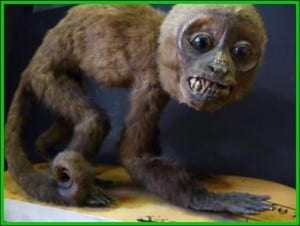 Hello dear readers, Dean Veall here. I came across this week’s Specimen of the Week whilst writing another Specimen of the Week many months back and thought I would save it for a cold February Monday as just like that specimen it has a irrescedent sparkle on its wings that will hopefully banish those Monday blues. It is also a species that many of us will have likely come across as we have peered whistfully out of our windows whilst writing romantic prose (no? Just me) in Winter when this species stands out the most. If you did spot this species as you were looking out the window on the last weekend of January you were probably one of 315,000 who were taking part in the RSPB’s Big Garden Birdwatch. *Spoilers* With that tidbit I should probably tell you that this week’s Specimen of the Week is…….
Hello dear readers, Dean Veall here. I came across this week’s Specimen of the Week whilst writing another Specimen of the Week many months back and thought I would save it for a cold February Monday as just like that specimen it has a irrescedent sparkle on its wings that will hopefully banish those Monday blues. It is also a species that many of us will have likely come across as we have peered whistfully out of our windows whilst writing romantic prose (no? Just me) in Winter when this species stands out the most. If you did spot this species as you were looking out the window on the last weekend of January you were probably one of 315,000 who were taking part in the RSPB’s Big Garden Birdwatch. *Spoilers* With that tidbit I should probably tell you that this week’s Specimen of the Week is…….
Mermaid’s purses and the importance of looking sideways
By ucwaemo, on 4 February 2015
Among the Grant Museum’s collection of glass sponges, there are a few specimens that really demand attention. One is the Venus’ flower basket, Euplectella aspergillum, an intricate weave of spicules in the shape of a sealed cone. Its romantic name comes from the behaviour of a species of Spongicolidae shrimp who make their home inside the sponge’s glass cage, where they feed off creatures filtered through the sponge’s walls. Having entered the sponge at the larvae stage, the shrimps grow too big to ever leave and remained trapped inside for life. In parts of Japan, dried specimens of the Venus’ flower basket are given as a wedding present, with the two shrimp preserved inside.
The other show-stopping specimen is harder to see, as it sits in the dark in an out-of-reach cupboard: the glorious glass rope sponge, Hyalonema sieboldi. Formed of a bulbous top of interlocking spicules, this animal roots itself into the sea floor using a long twisting rope of glass, which resembles a bundle of optical glass fibres. The Museum’s specimen has been mounted within an unsteadily tall and thin glass jar, and visitors can only spot it up in the rafters using the binoculars provided. However, it is not alone. While it was alive, a cluster of zoanthids, colonizing creatures resembling brightly coloured miniature anemones, made their home on its ropey root. And it has one other attachment: a shark’s egg case, commonly known as a ‘mermaid’s purse’. Clearly, the glass rope sponge is an attractive settlement.
 Close
Close


